Most of the ‘great’ walking tracks (like the Alps’ for example) head along the tops where I admit the views outward and downwards can be truly awe inspiring. They do lack for water (and fish) however, are often windy and/or with very changeable weather that can be a challenge for tents and even survival. Often they even lack for firewood for a nice cheery fire too.
Myself I prefer the valleys though they seldom for some reason have any track at all. Mind you this means you can mostly have them all to yourself. I prefer the view looking up anyway. I am laid up at the moment but that does not prevent me from dreaming of just such journeys.
And as you can see, Spot is dreaming too:
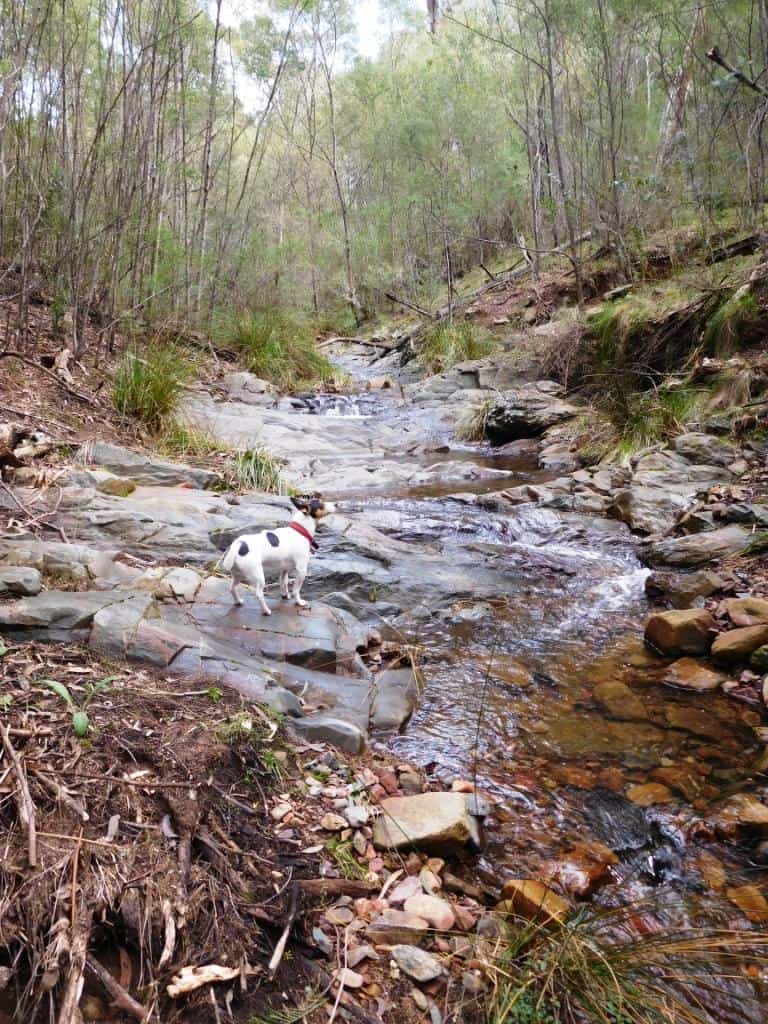
Let me hint at a route you might follow up the Freestone Creek (Briagalong) from the beautiful ‘Blue Pools’ for example. All the way up. Here and there are walking tracks, 4WD tracks, old abandoned logging tracks, deer trails and just plain bush-bashing.
The beautiful ‘Blue Pool’:
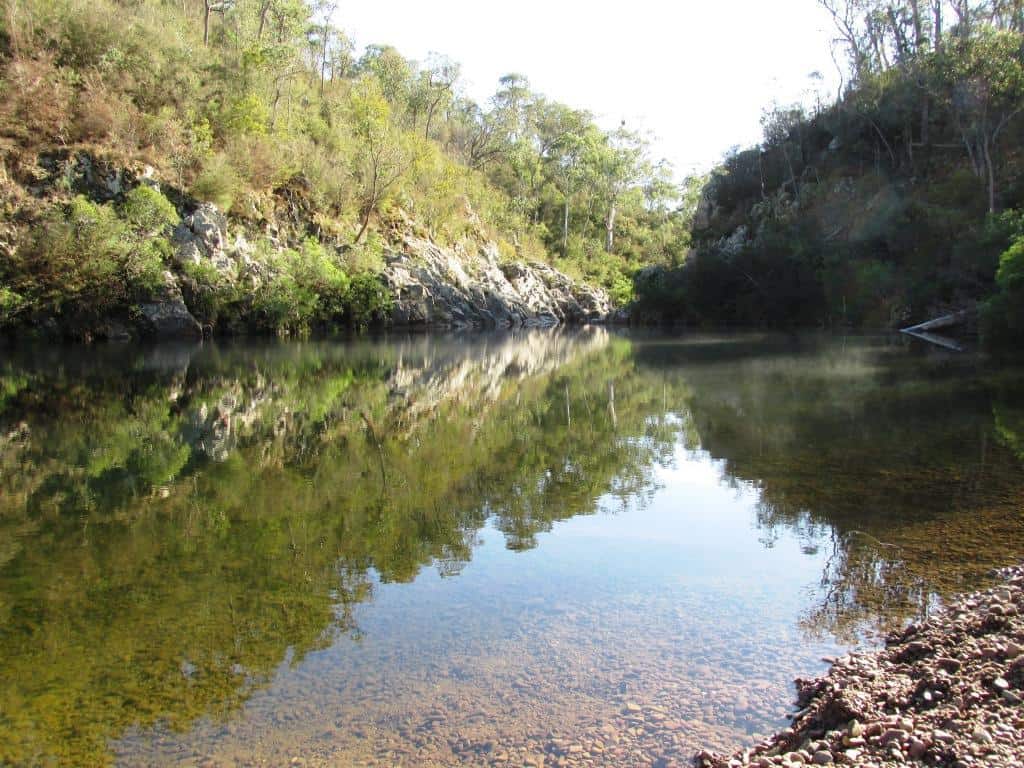
Two dogs eager to start the journey – how young Spot was in May 2013:
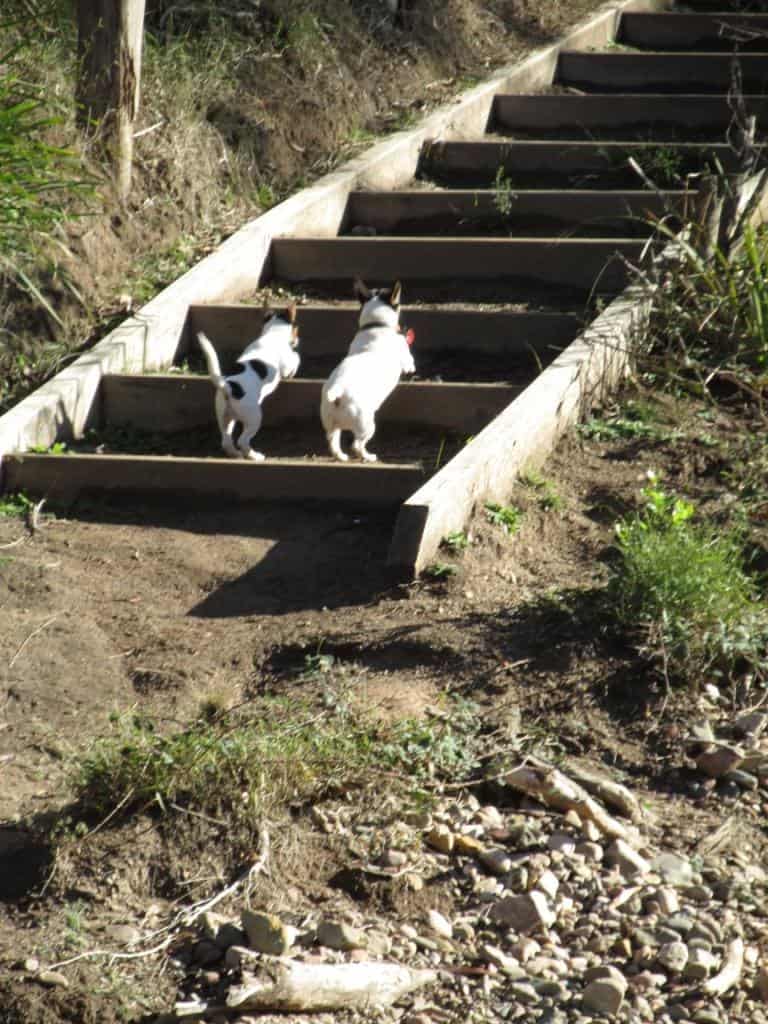
But he was keen to lead on up the valley
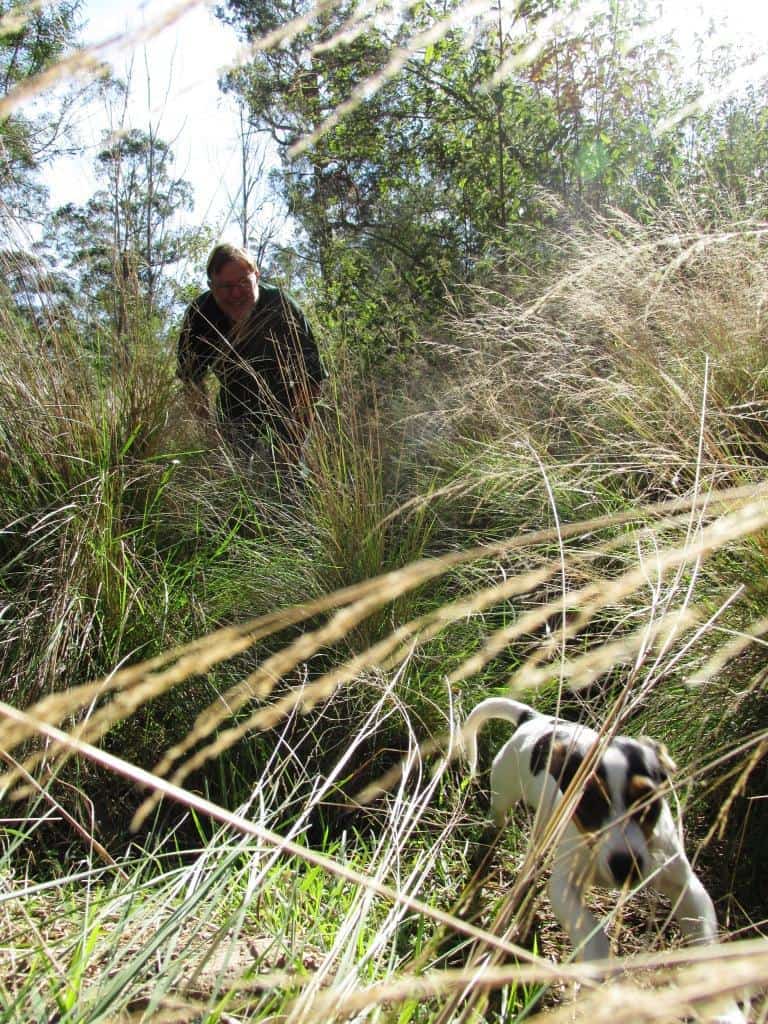
Past a remarkable bird’s nest:
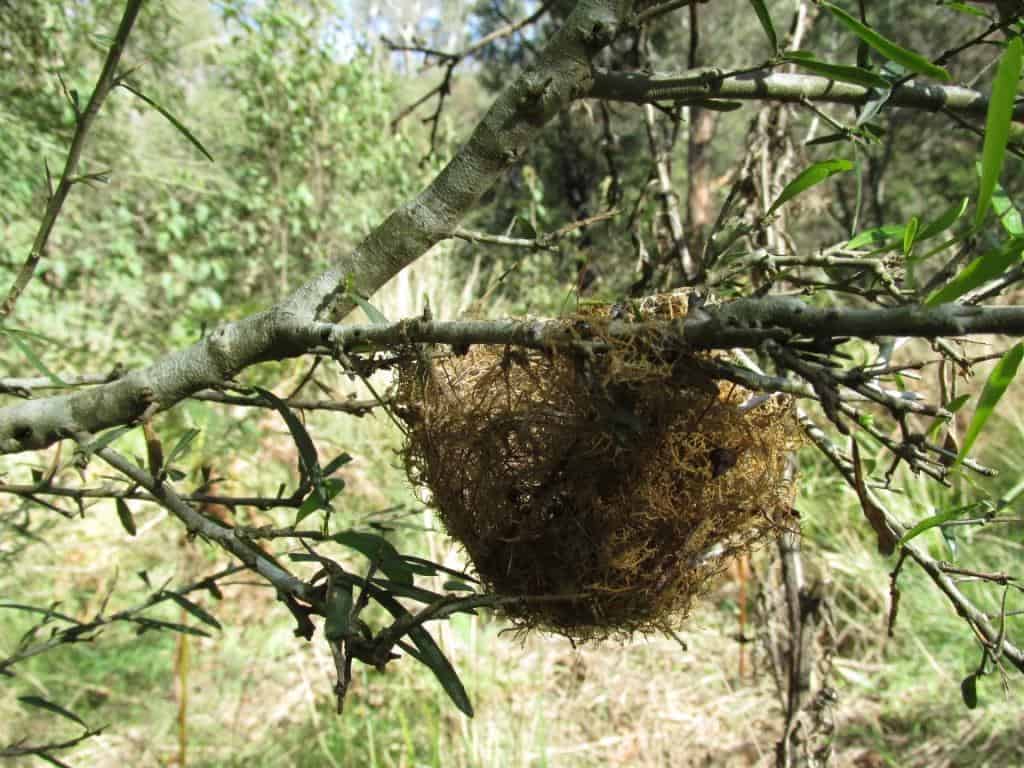
For just a journey of 3-4 days I guess you could (eg) leave your mountain bike at the top of the unnamed track that drops down from the Rim Track above Mt Blomford (above the Lees Creek Track) and return to your car (at the Blue Pools) via the Marathon Rd – quite a pleasant down hill journey.
The Freestone Creek is a beautiful watercourse (with trout, blackfish, crays, freshwater mussels, etc) and you will find many wonderful campsites along the way. I guess over the years (deer hunting, etc) I have walked pretty much all of it coming out at the top onto the Marathon Rd or the McDonald Gap Track perhaps.Many people who love the Blue Pools have never seen the Upper Freestone (which is even better) and is accessed by the delightful Lees Creek Track which criss-crosses it many times,
What a delightful stream the Freestone is. You can walk in or beside it for many, many kilometres.
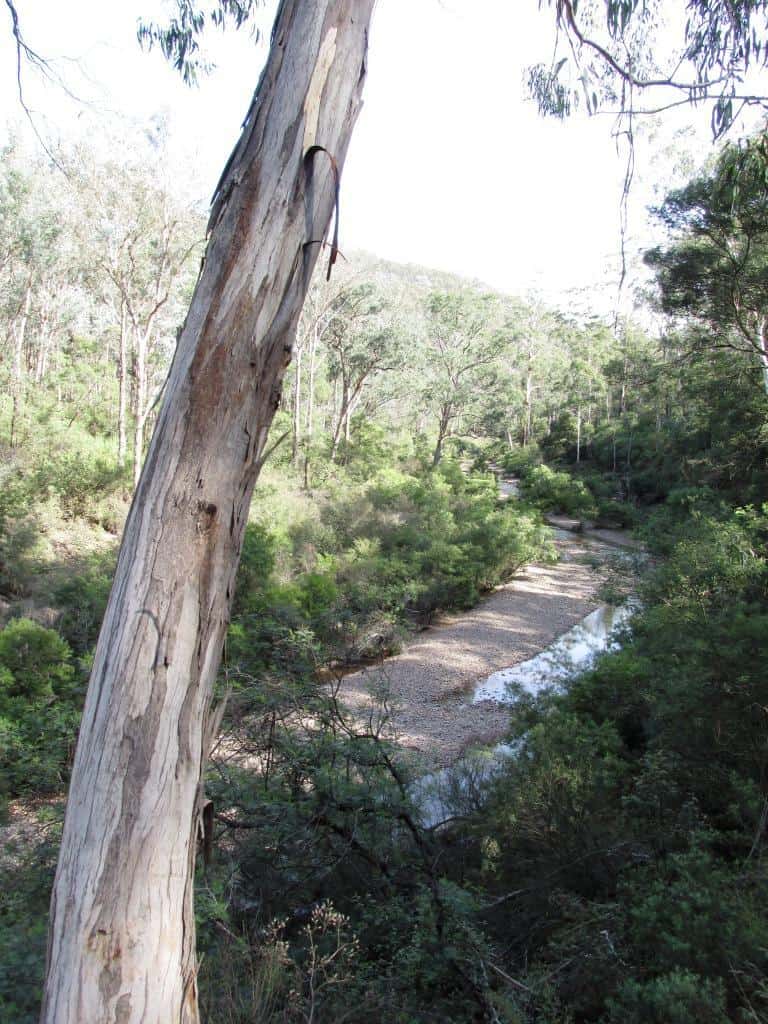
The road used to follow the creek all the way but a substantial length now diverts from the river. The old road can still be walked however (as you will find out). Quite a lot of it I would have walked in the dark either trying to get to a twilit bail-up or attempting to round up stray hounds after just such a missed bail-up. I know I have a couple of times walked into a large tired stag the dogs still had bailed up in the dark.
The Upper Freestone:
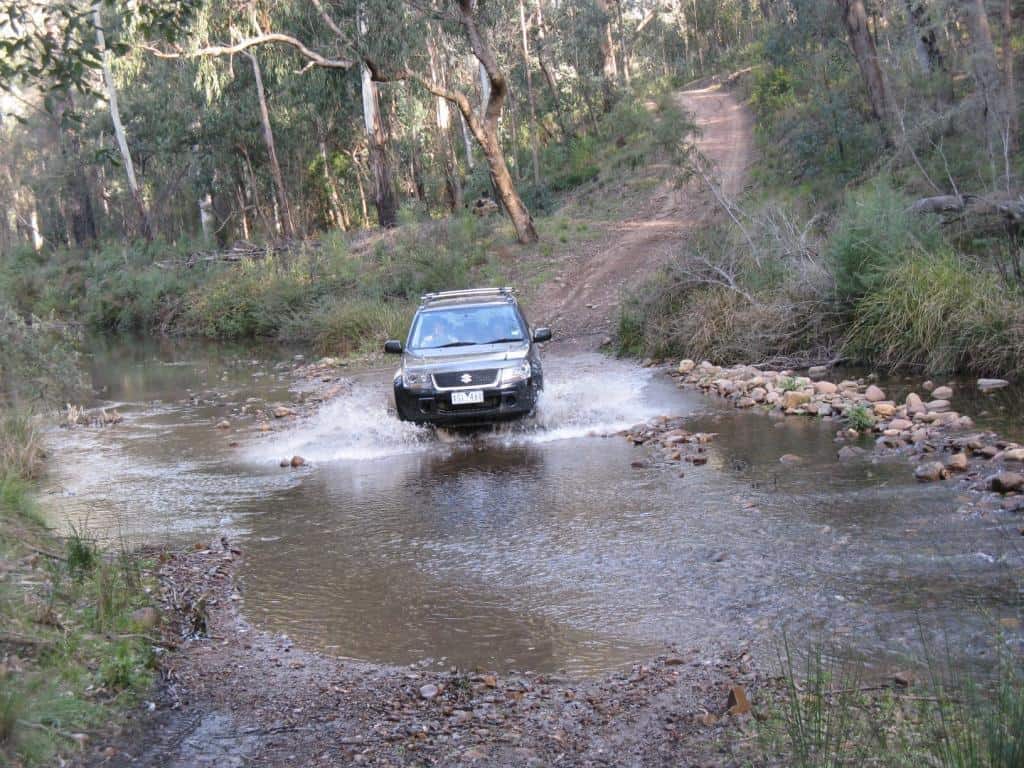
This is a heart-starting experience I can tell you. Much like dropping onto the back of a large shark or porpoise body-surfing when you are a mile out from the beach on the ‘Groper Break’ at Nobby’s near the Newcastle Heads for example. Something which used to happen to me when I was a teenager. It’s a wonder I grew to be a man. There used to be a song about such growing up in Newcastle and working at the BHP steel refinery which then dominated the Harbour and city in the 1960s – what a decade! I worked there too pouring pig iron in the blast furnace, etc. ‘ Men grow strong as iron upon black bread and sour’ was the refrain. I certainly did.
A shark’s skin (called ‘shagreen’) is much more like sandpaper than a dolphin’s (smooth) so it certainly alerts you when to be scared if you should touch it. A mile out to sea there is not much to be done about it. Hard to believe that at 14-15 years old we swam out there to surf (and stayed all day in the water) to swim back in in the afternoon, then catch the train home (to Fassifern). Much better than taking illicit drugs, violent video games or whatever it is the youth risk themselves at these days. We also often rode our bikes up into the Watagan Mountains (behind Fassifern), climbed all over their wild places and camped out there by the light of he moon.
Once you cross the divide (McDonalds Gap Track) you would head down the Little River to the Moroka. This is likely to be tough going after the fires, but might be OK if you walk in the middle of the ‘river’. It is not much more than a gutter really, yet it still held live trout (miraculously) after the fires burnt to the very water’s edge – and even though every fish and eel in the Macalister died! We were one of the first vehicles in after the fires. That was practically the only life we saw in a hundred miles of driving – save for many deer tracks around the deepest waterholes. It is no wonder there are so many deer now – and so little else. Such (wildfire) management is a crime! You might find the going better on the ridges or even sticking to the roads. This is an adventure for you. I can’t do everything there is left to do. (I am 70). You will find out for yourselves.
Moroka Hut
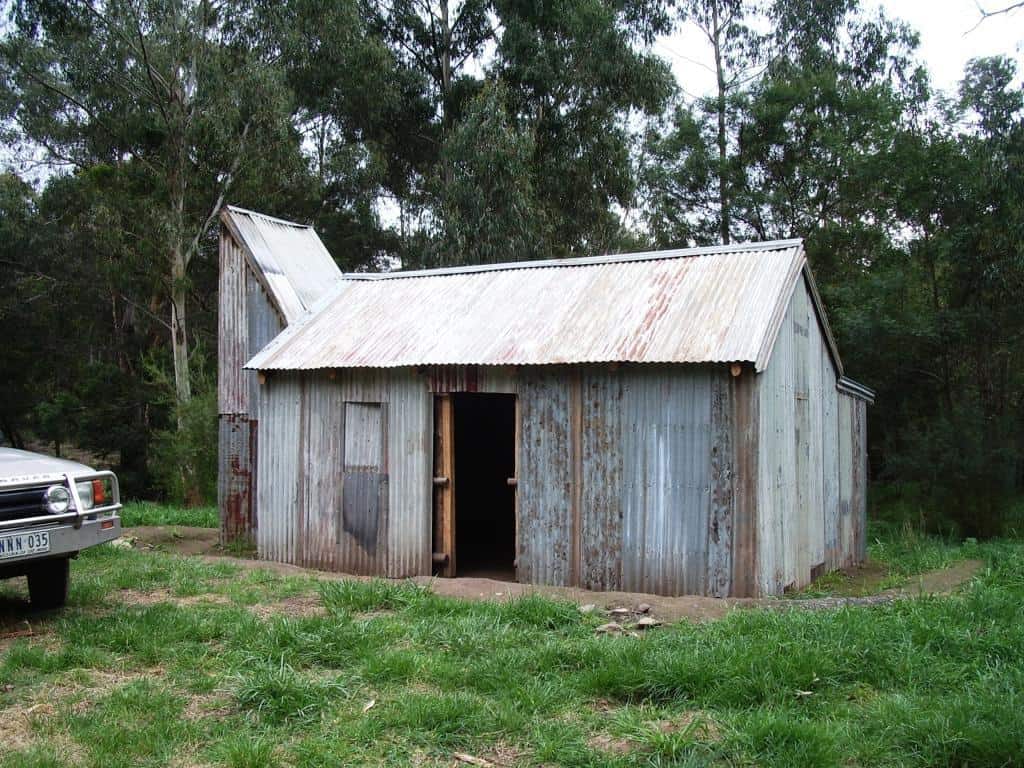
It was a welcome haven on this day in 2008 I can tell you.
 There is plenty of fairly easy walking along the Moroka wherever you hit it – eg from the Moroka Hut down to Horseyard Flat. There is a fine track from Horseyard Flat down to the first waterfall at least. The main set of waterfalls further on is awesome, especially when there is enough water to canoe the river (if you are suicidal!)
There is plenty of fairly easy walking along the Moroka wherever you hit it – eg from the Moroka Hut down to Horseyard Flat. There is a fine track from Horseyard Flat down to the first waterfall at least. The main set of waterfalls further on is awesome, especially when there is enough water to canoe the river (if you are suicidal!)
You may find it more congenial to cross the river in the vicinity of the main falls and climb to the other side for a better view. Then you might find it easier to walk down the ridges aiming for the Moroka in the vicinity of Higgins’ old cattle yards above the Moroka Creek Track. There are some drops to avoid, as you will find out. However I have beaten my way down through the Gorge itself when I was younger crossing back and forth. It certainly is beautiful and entertaining.
The Upper falls: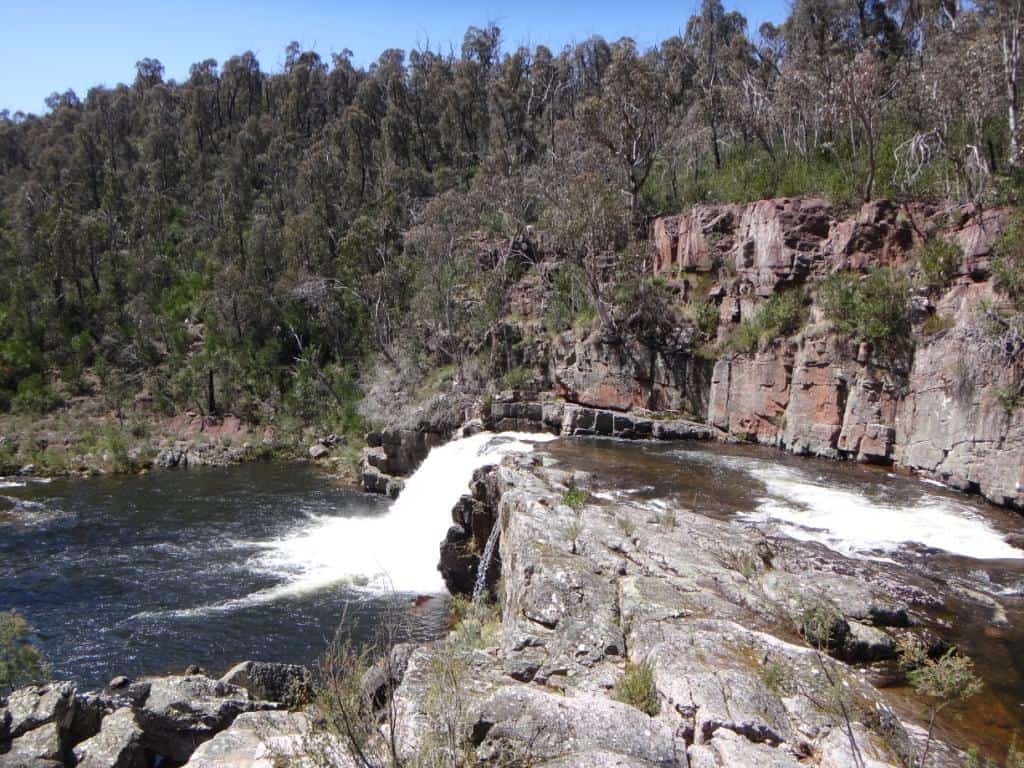
Even beautiful on a wet day:

The way gets a bit rougher from here on:
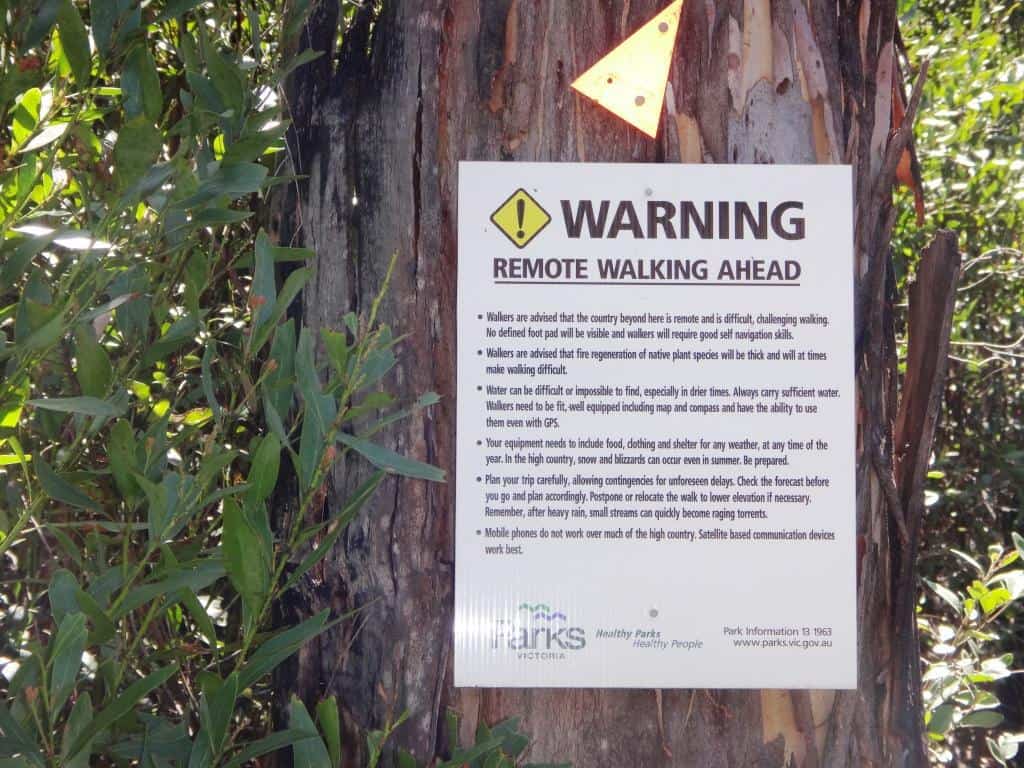
When you are walking along the Moroka (below the Gorge) ignore the so-called track. Criss-cross in such a way as to make for the flattest walking. From Higgins Yards to the Moroka Creek for example the ‘track’ is on the true left bank but it is choked with blackberries. You can walk along the clear ridge on the true right bank. From the Carey down it is pretty clear on the true left bank even though the ‘track’ is usually on the other side. Ignore the ‘track’ Parks Victoria will never do any real work – not so long as they have air-conditioned offices and 4WDs and can have meetings.
From the Moroka Creek Track (at least) the river is ‘canoeable’ (when there is enough water – perhaps 2 metres on the Waterford gauge) though intrepid adventurers have come down it all the way from the bridge on the Moroka Road! Truly. But it is not recommended to come over those falls (though people have)!
Here are the instructions from folks who have done it – and a stolen photo: https://www.adventurepro.com.au/paddleaustralia/pa.cgi?action=details&id=moroka
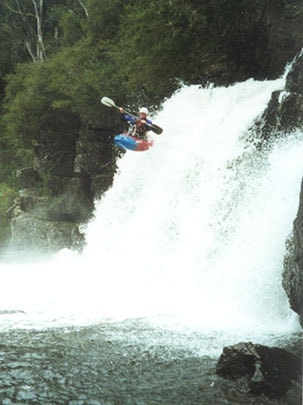
So it might have been a good idea to bring along your pack raft because when there is sufficient water (eg above 1.8 metres on the Waterford Gauge on the Wonnangatta) you can raft all the way down – to the Castleburn Creek confluence in this scenario about seven days lying about on your raft like Huck and Tom, say from the Moroka Creek Track down – which would be the safest put in, but there are some interesting rapids between there and the Wonnangatta – and some lovely grassy camps too. If you put in at the confluence (six days) it would be safest There are plenty of beautiful campsites on the Wonnangatta too. See (for hundreds of photos and precise canoeing instructions) eg:
http://www.theultralighthiker.com/2017/11/22/remote-wonnangatta-day-two/
http://www.theultralighthiker.com/2017/11/15/a-wonnangatta-spring/
http://www.theultralighthiker.com/2017/11/15/a-wonnangatta-spring-day-two/
http://www.theultralighthiker.com/2017/11/15/a-wonnagatta-spring-day-three/
http://www.theultralighthiker.com/2018/01/04/canoe-wonnangatta-kingwill-to-meyers-flat/
http://www.theultralighthiker.com/2017/01/17/wonnangatta-kingwell-bridge-to-black-snake-creek/
http://www.theultralighthiker.com/2017/01/17/wonnangatta-black-snake-to-hut-creek/
http://www.theultralighthiker.com/2017/01/17/wonnangatta-hut-creek-to-waterford-bridge/
http://www.theultralighthiker.com/2018/12/13/wonnangatta-waterford-to-angusvale-day-one/
Moroka-Wonnangatta confluence.
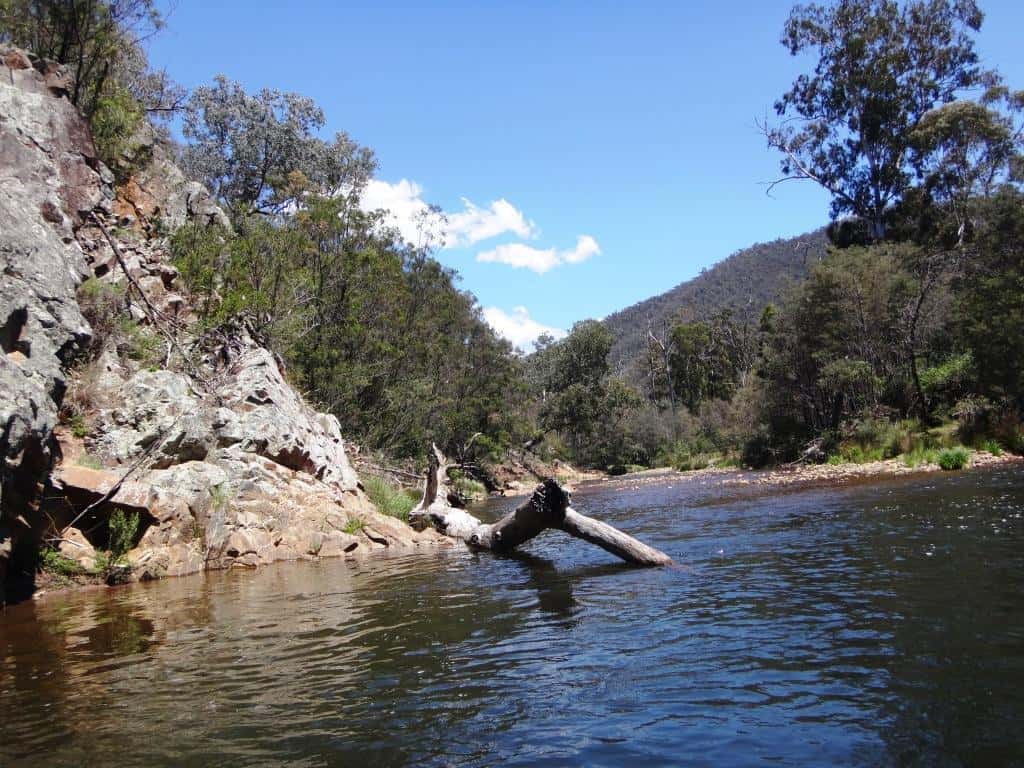
Of course you can walk all the way mainly on the true right bank, sometimes in the water,sometimes criss-crossing along over bends and loops, sometimes walking along on beautiful river flats replete with bell-birds, wood swallows and bee-eaters – and there are roads too in places.
Castleburn Creek Confluence:
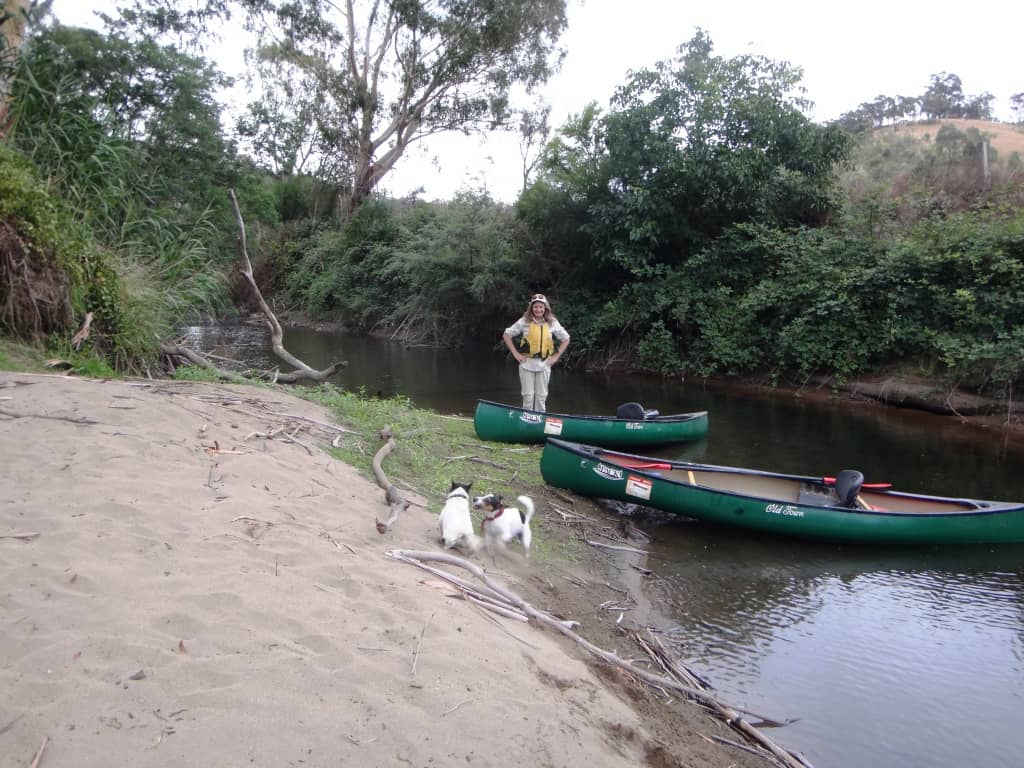
If you walk up the Castleburn Creek (there is a lovely campsite at the confluence, but vehicles can get there) you will swing away from the main road till you hit the Black Range Track which you will follow till you hit the walking track that runs down from Pretty Boys Hill via the Lees Creek to the Freestone once again – thence down it as before in the opposite direction to the Blue Pools.
Of course I am assuming you will make this journey in the warmer months but still when the mighty Wonnangatta has enough water to make for an interesting pack raft trip from the confluence down. Some day you may even be lucky enough to find enough water in the Freestone to make it canoeable, or some other side gully might provide an adventure when the rains pour down – something which no man has ever enjoyed The Scorpion or the Castleburn for example. Who knows what delights await in some shady grove deep in the mountain’s heart? I know I have often thrilled to some unexpected ephemeral delight deep in the wilderness.
As a deer hunter I can never neglect the many side gullies which join the main stream. My journey would be likely to take much longer than yours as I spied my way up them. Often they contain hidden wonders which you would otherwise miss in this life: it might be a rare tree or orchid in bloom, or some wildlife or another caught in a surprising way: Baby deer frolicking like lambs for example. Watching a huge goanna fold itself into a miniature tree hole high in some forest giant. A beautiful miniature waterfall or just a perspective (maybe when a rainbow winks into existence) looking up or down the gully which brings joy to your heart.
Take your time. You will not pass this way again. And you will pass surprisingly soon. I have seen so many good friends come and go. People whose faces come to me as I see a remembered path or tree in some hidden gully where we once stood, perhaps sharing an orange together long ago..
You would have to make a couple of food drops (along the Wonnangatta – Moroka Glen and Castleburn confluence perhaps?) somewhere perhaps if you intended to do this trip. The old fellas in the C19th would have traveled the land like this with just an axe, a billy, a bag of flour, some salt, a fishing line and a rifle – and mostly lived off the land. Of course you could too (barring legalities!). I favour a .410 myself for its lightness and versatility. Some models such as Rossi’s ‘Circuit Judge’ can be dismantled so they will fit in your pack but can also take a .45 calibre pistol round or a solid in .410 – either big enough to take surprisingly large game. A sambar would have to be quite close and carefully targeted. A wallaby would be easy. Just across the way in Tasmania it is legal to kill and eat them. I can’s see what is the difference myself. Many animals starve to death in winter because they were not harvested before the days start to close in.
Ducks are plentiful along our rivers. Likewise native pigeons (though illegal) are a culinary delight. People tell me lyre birds are as tasty as any bantam. And so on. The game will still be there long after the laws and the people who made them are dust. Some years you will find rabbits plentiful, echidna, brush-tailed possums, goannas, water dragons and so on. A PS: The ‘Tea Tree which is found in various spots along the way was so named because the early settlers used to use an infusion from it as a substitute for tea.
I guess it would take me nearly a week (on my 70 year old legs, but enjoying the trip immensely as I go) to reach the Wonnagatta-Moroka confluence from the Blue Pools. I would then have about a week drifting down the Wonnagatta then 3-4 days making my way back to the Blue Pools, so it is not a weekend trip by any means. You are no doubt much younger (and perhaps in a dreadful hurry to get to the grave!) so you can/will be much faster. I only hope you learn and enjoy along the way…
A couple of other ideas:
First a short one: Sandy Creek to Morris Creek, down the Wellington, then a short section of the Mitchell Gorge (bring the pack raft), then walk up the Sandy Creek to your camp.
Up the Nicholson (from around Bairnsdale) to say Marthavale (some bastards burned down the wonderful hut there but it is still a lovely place to camp (although vehicles) with fresh trout in the river nearby. Over (via ‘Steve’s Track’ – Yes!)’ into the Wellington, then down the Mitchell to the beginning (perhaps at the wonderful ‘sand jetties’ at the mouth of the Mitchell. This one would also take weeks and require resupply.
I used to love walking up the Deep Creek – a tributary of the Thomson (years ago) then down the Aberfeldy to the Thomson, sometimes by boat. I could raft down the Thomson to Deep Creek and exit via the (now closed) D10 track which used to take me to within a chain of deep Creek just upstream from the Thomson confluence.
I’m sure if you have read this far, you get the point. There are many wonderful valley walking/pack rafting trips to be enjoyed in the Gippsland mountains. All I can say is: ‘Get out there’. Soon you too will be 70 – or worse!
Can I recommend Rooftop’s Dargo-Wonnangatta Adventure Map for this (and many other like) fascinating expeditions?
Here is a photograph of mine. The screwdriver at the bottom is pointing to the Blue Pools. The screwdriver on the left points to the Moroka confluence (with the Wonnangatta). The pen points to the Castleburn Creek confluence. The squares are one kilometre. It doesn’t work very well I’m sorry, but if you right click ‘view image’ then zoom in on it I think you can follow the instructions up the Freestone then over to and down the Moroka then down the Wonnangatta, up the Castleburn across to the Freestone and down it once again. You could take a better map with you perhaps. (You can see my old map has done some work!)
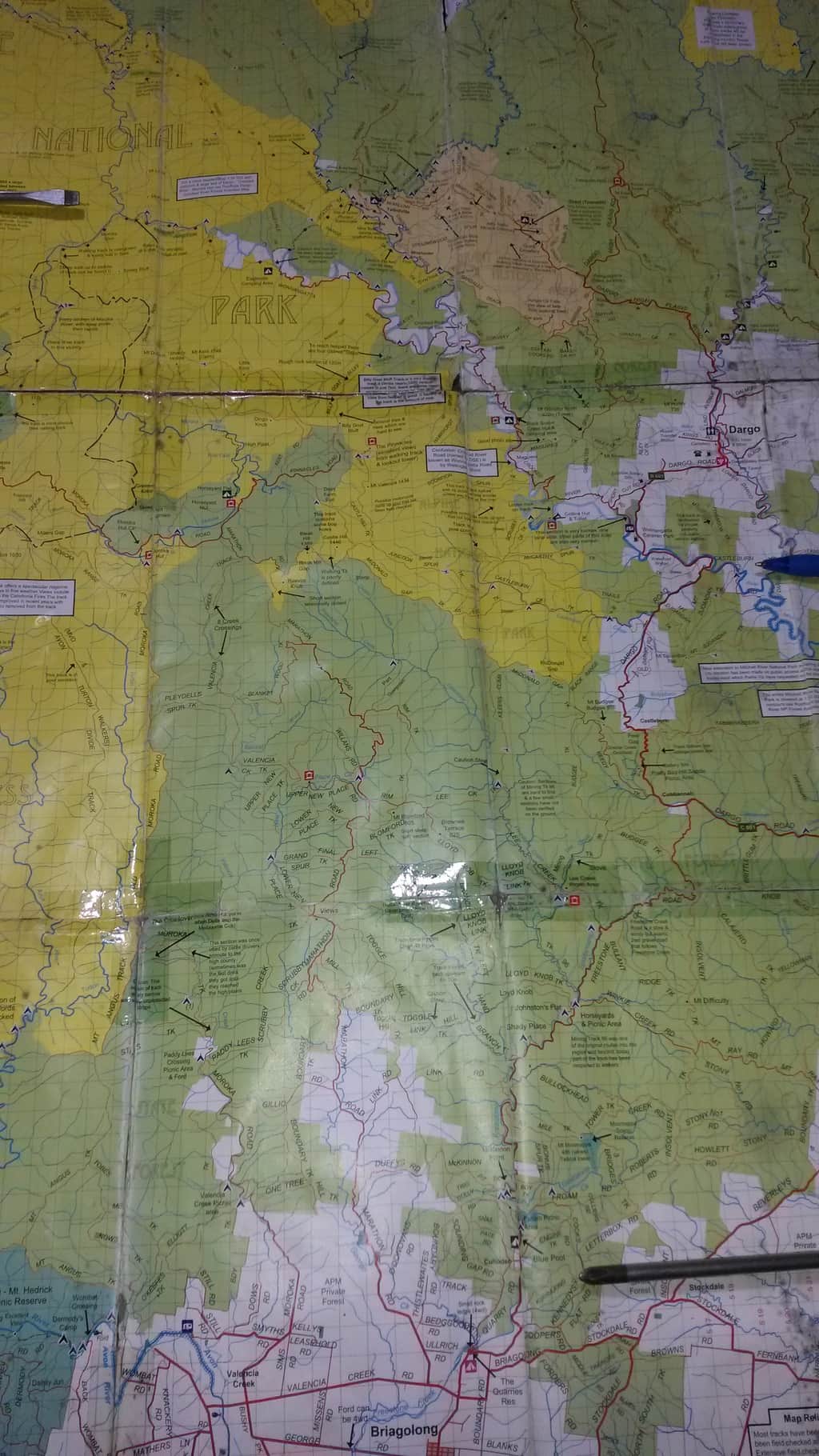
See Also:
http://www.theultralighthiker.com/2018/09/25/nuts-to-leave-no-trace/
https://www.theultralighthiker.com/2018/11/04/beginning-hiking/
https://www.theultralighthiker.com/2018/12/20/their-torn-and-rugged-battlements-on-high/
PS: Oh, and I forgot. You are going to be walking in water for much of any such route so your hiking shoes are going to be wet all the time. Over the years I have tried many strategies to cope with this. Mostly surrounding having dry feet in camp of a night. Dry feet in the daytime is just a silly delusion. There are many posts about this starting with this one culminating I guess in this one which is where I am at the moment:
https://www.theultralighthiker.com/2017/04/14/19-gram-dyneema-camp-shoes/
https://www.theultralighthiker.com/2016/09/22/fifteen-gram-blue-foam-flip-flop/
PPS: The very best part about walking these valleys is fresh fish for breakfast or dinner – or fresh yabbies, crays or eels. You just don’t get anything like that along the tops. On this journey for example, there would be only a couple of nights in well over a fortnight you would miss out on this great bush tucker.
First Published Dec 27, 2018


That is quite a narrative (you ARE hardwired for the wilderness).
Thank you Alan. Glad you enjoyed it.